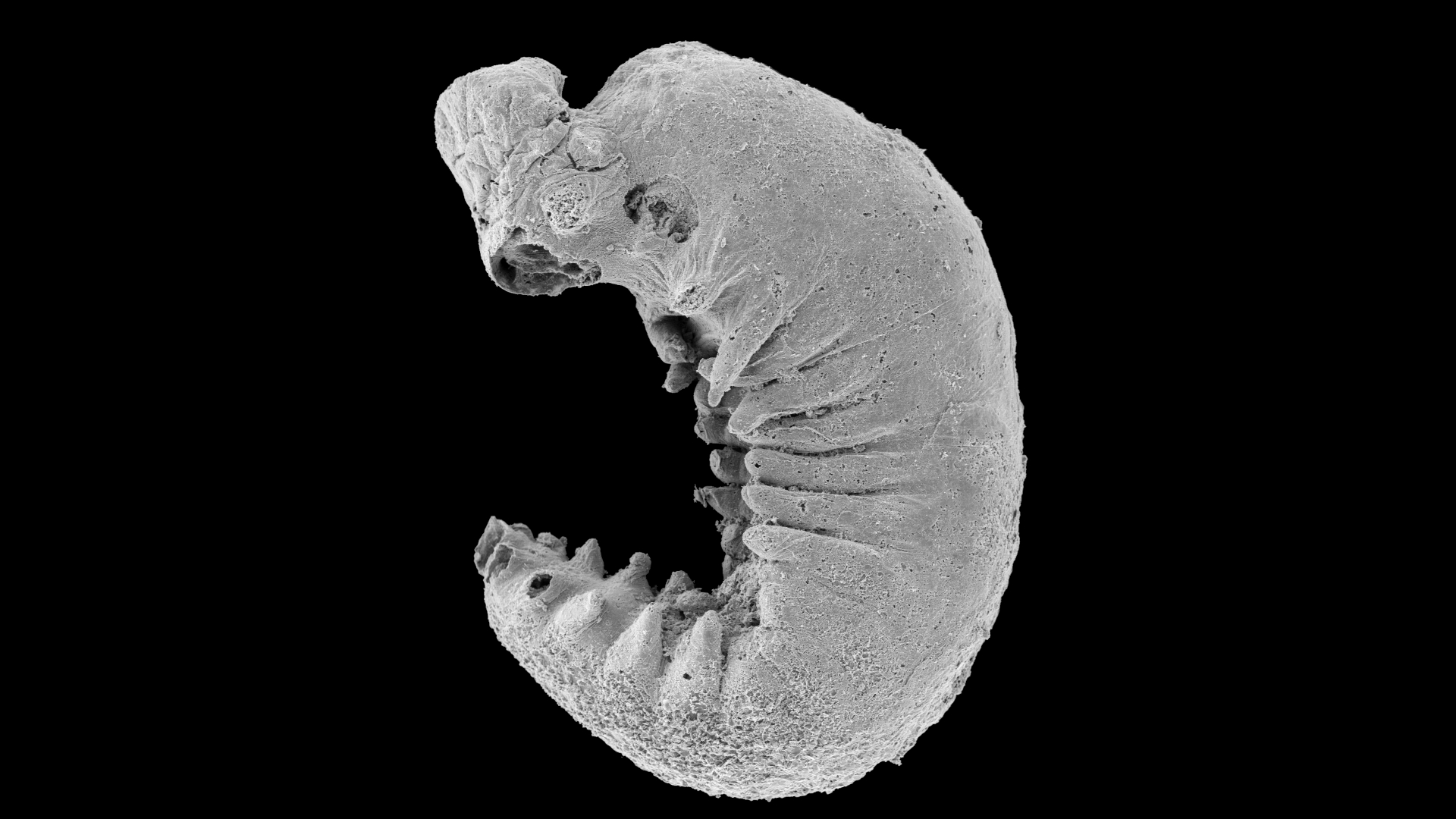'My jaw just dropped': 500 million-year-old larva fossil found with brain preserved
The newly discovered Youti yuanshi larva fossil is so well-preserved that it provides a road map for arthropod evolution during the Cambrian period.

Researchers have discovered how the brain of the largest animal group evolved after finding the remains of a microscopic, worm-like creature that lived half a billion years ago.
The creature died while still in its early development, or larval stage, and belongs to a new species named Youti yuanshi, which combines the standard Chinese words "yòutǐ," meaning "larva," and "yuánshǐ," meaning "primitive," according to a new study published Wednesday (July 31) in the journal Nature.
Y. yuanshi inhabited the Cambrian seas and helped give rise to living arthropods like insects, spiders and crabs. Despite being about the size of a grain of sand, the fossil is exceptionally well-preserved, revealing never-before-seen details that help explain how arthropods developed complex brains.
"When I used to daydream about the one fossil I'd most like to discover, I'd always be thinking of an arthropod larva, because developmental data are just so central to understanding their evolution," study lead author Martin Smith, an associate professor in paleontology at Durham University in the U.K., said in a statement. "But larvae are so tiny and fragile, the chances of finding one fossilised are practically zero — or so I thought!"
Related: Stunning 3D images show anatomy of 500 million-year-old Cambrian trilobites entombed in volcanic ash
A team of researchers recovered the fossil from the Yu'anshan rock formation in the Yunnan Province of China. They scanned the fossil with X-rays to create virtual 3D images of its internal structures. The images revealed a brain and primitive circulatory system, including traces of nerves serving the larva's simple legs and eyes, according to the study.
"I already knew that this simple worm-like fossil was something special, but when I saw the amazing structures preserved under its skin, my jaw just dropped — how could these intricate features have avoided decay and still be here to see half a billion years later?" Smith said.
Sign up for the Live Science daily newsletter now
Get the world’s most fascinating discoveries delivered straight to your inbox.
While researchers aren't sure how the animal became such an exceptional fossil, at some point soon after death, its soft tissues were replaced with phosphate and preserved in rock. Smith told Live Science that there must have been higher levels of phosphorus in the water that provided the raw materials for the creature's cells to be converted into phosphate minerals.
The exceptional preservation allowed researchers to see more of an early arthropod's anatomy than they normally would. This included signs that arthropod brains were becoming more sophisticated during Y. yuanshi's time. For example, the larva had an ancestral brain region that would become the nub of a more specialized arthropod head with antennae and various other appendages, according to the statement. These specialized heads meant the creatures could adopt a variety of lifestyles, including becoming sophisticated predators.
"As the arthropod brain has developed, that's allowed arthropods to exhibit much more complicated behaviors and even more complicated morphologies," Smith said.
This "led to their rapid rise in diversity, which they've maintained to the modern day," he added.

Patrick Pester is the trending news writer at Live Science. His work has appeared on other science websites, such as BBC Science Focus and Scientific American. Patrick retrained as a journalist after spending his early career working in zoos and wildlife conservation. He was awarded the Master's Excellence Scholarship to study at Cardiff University where he completed a master's degree in international journalism. He also has a second master's degree in biodiversity, evolution and conservation in action from Middlesex University London. When he isn't writing news, Patrick investigates the sale of human remains.









